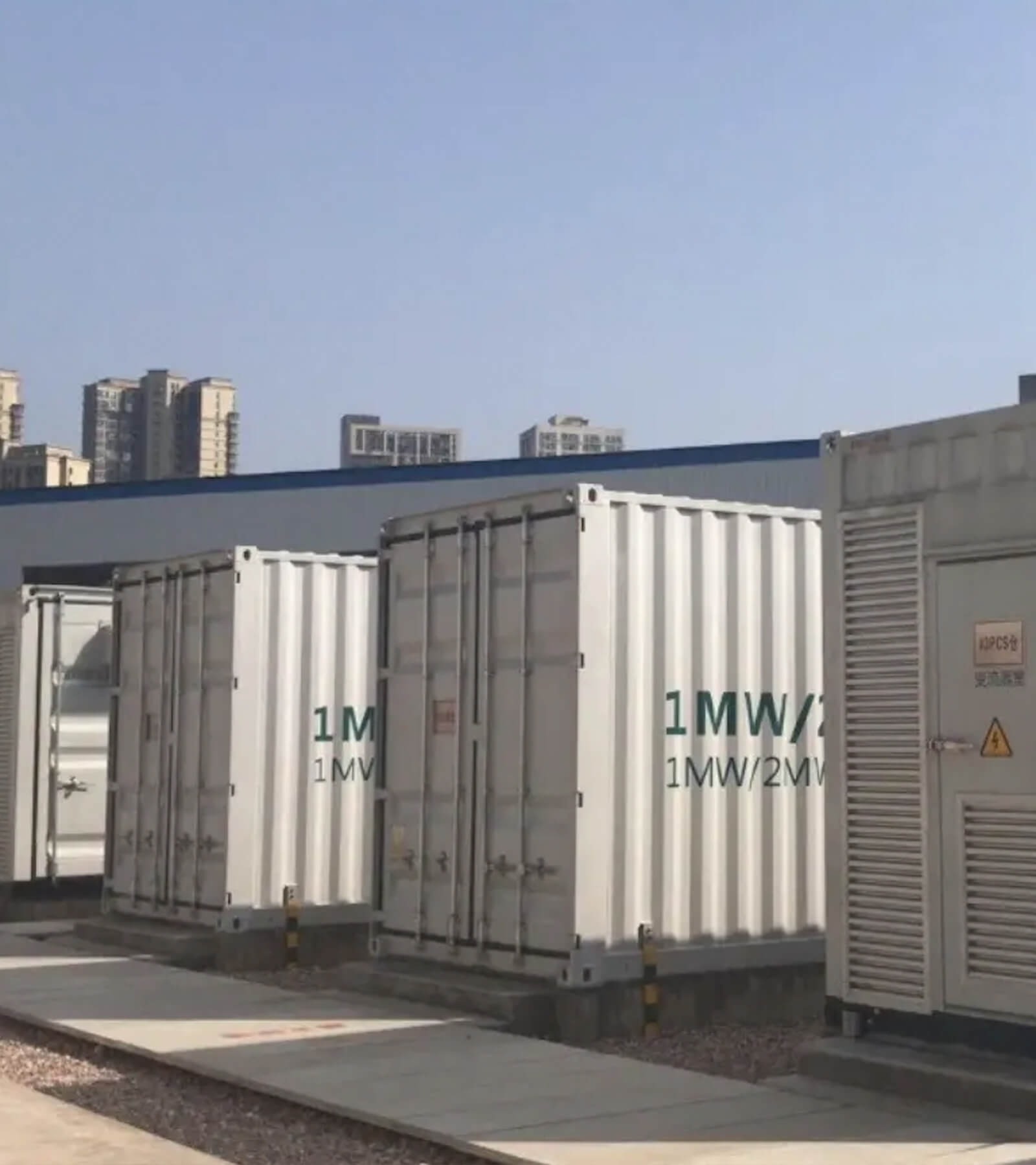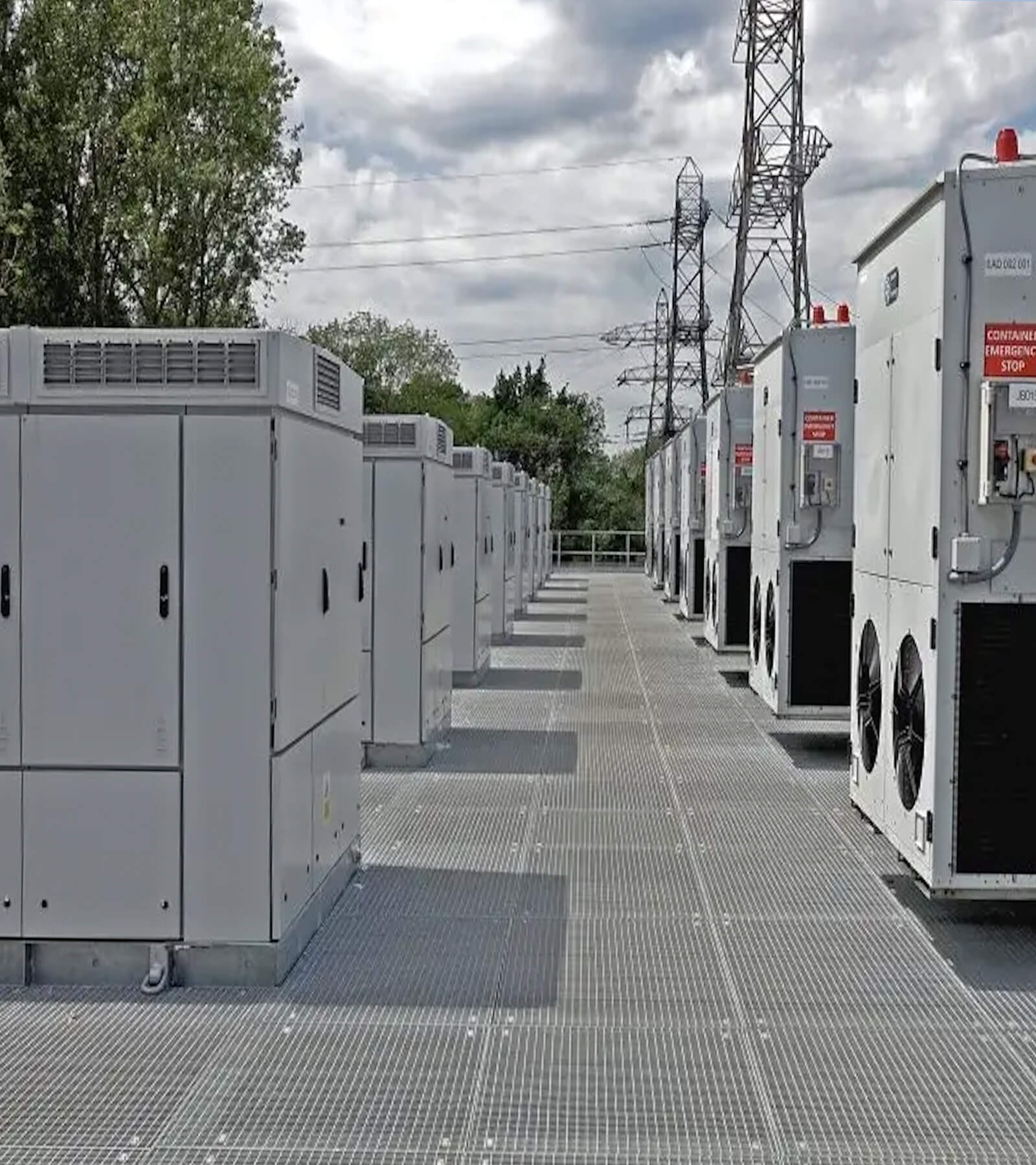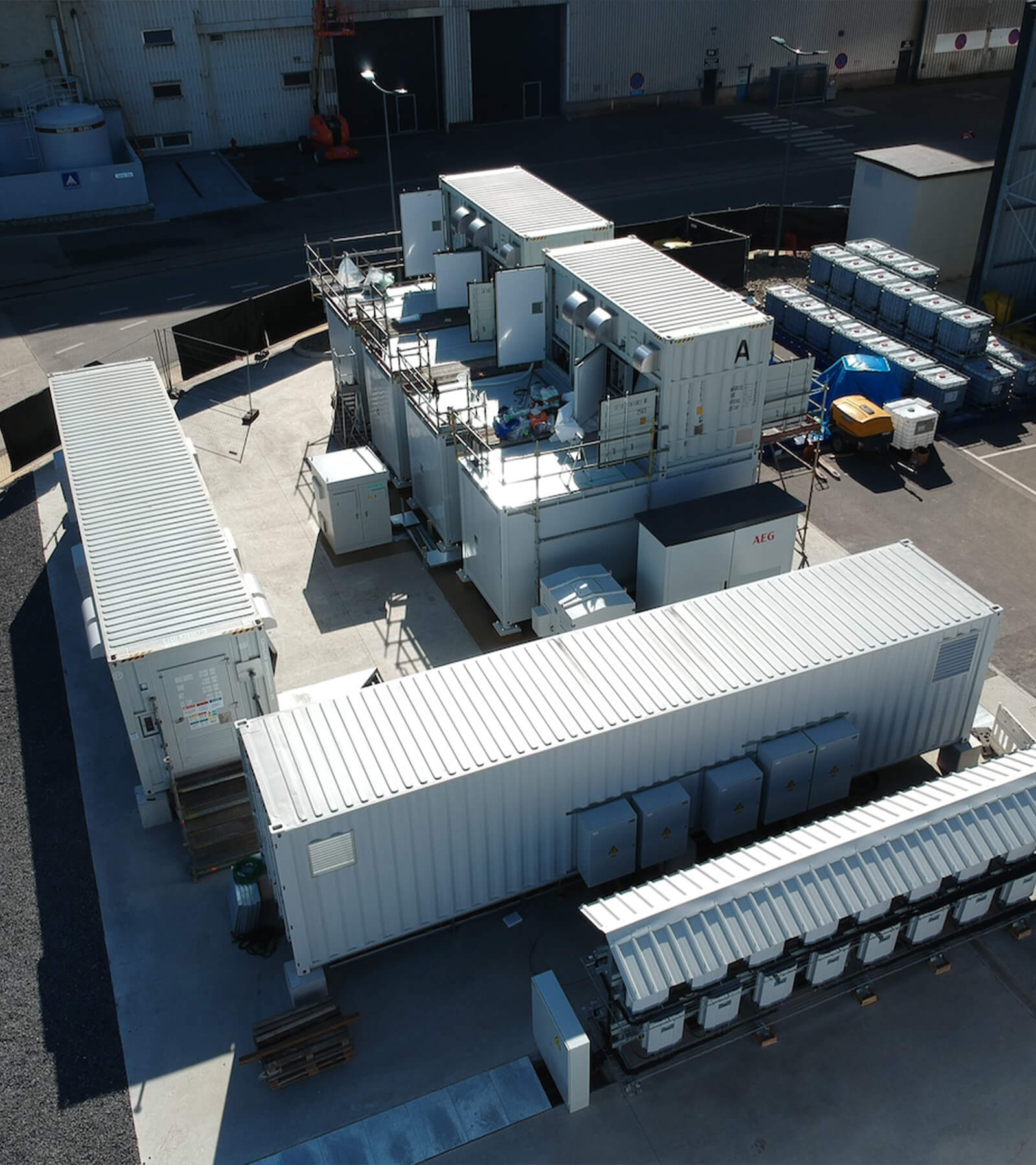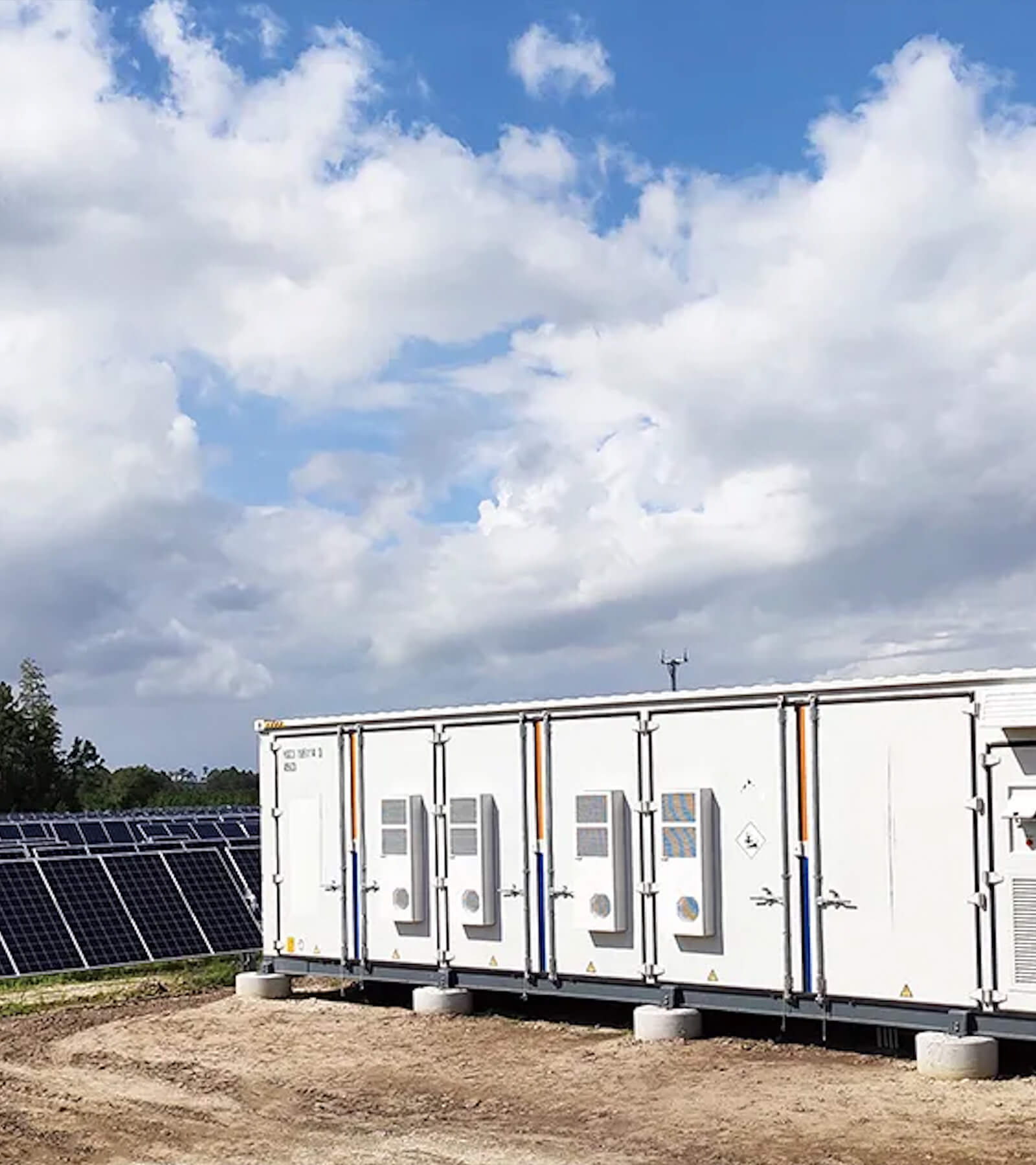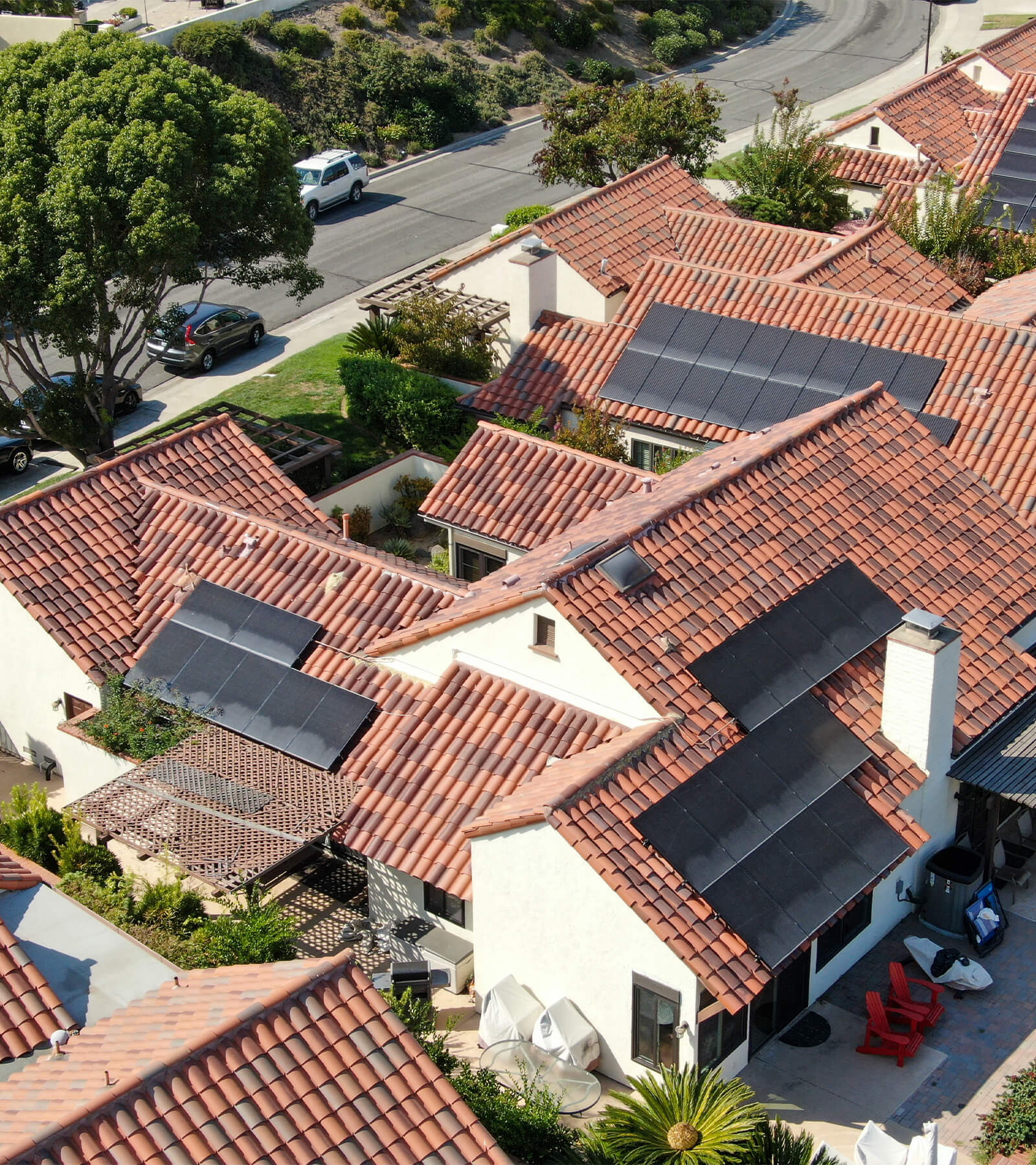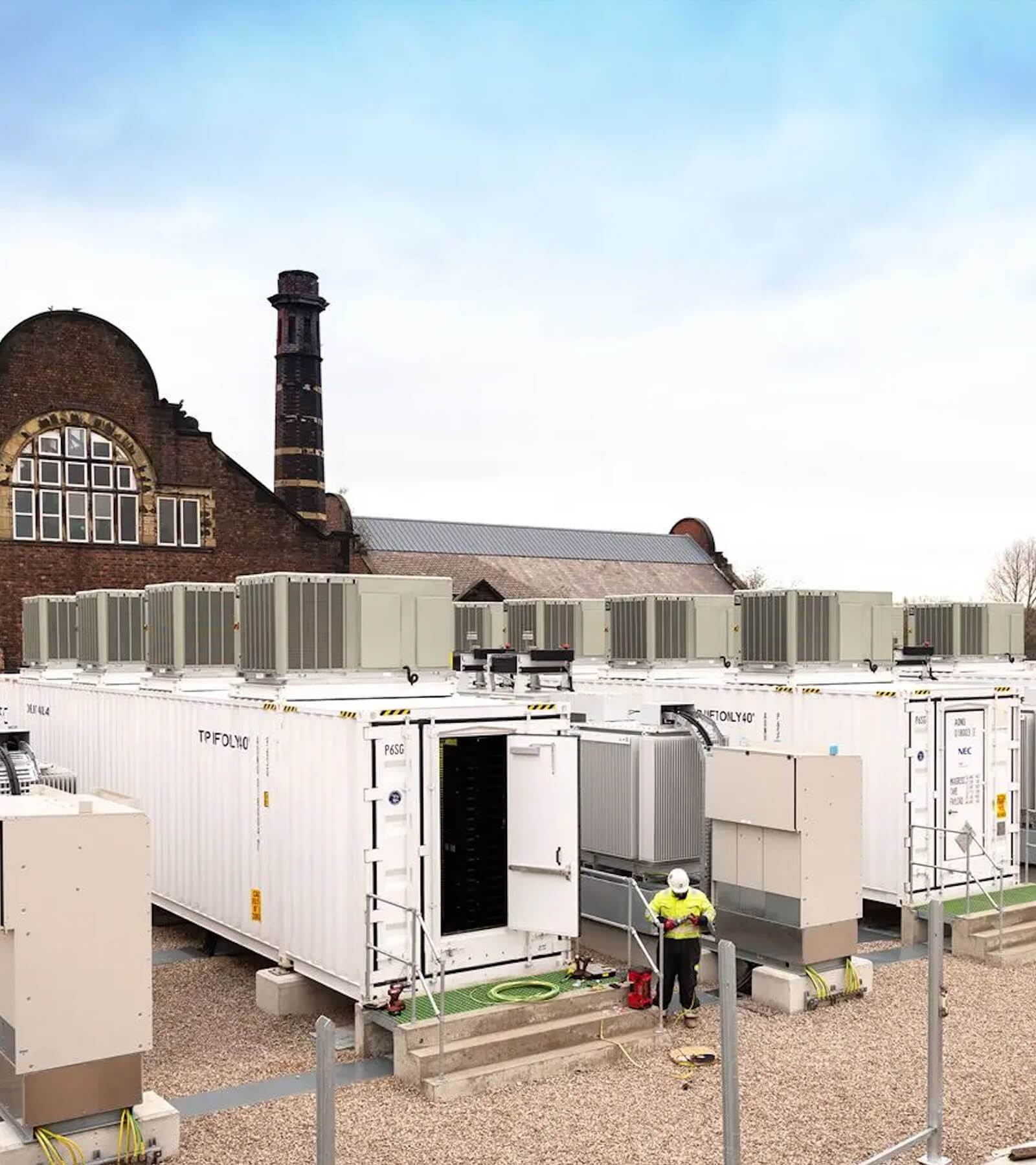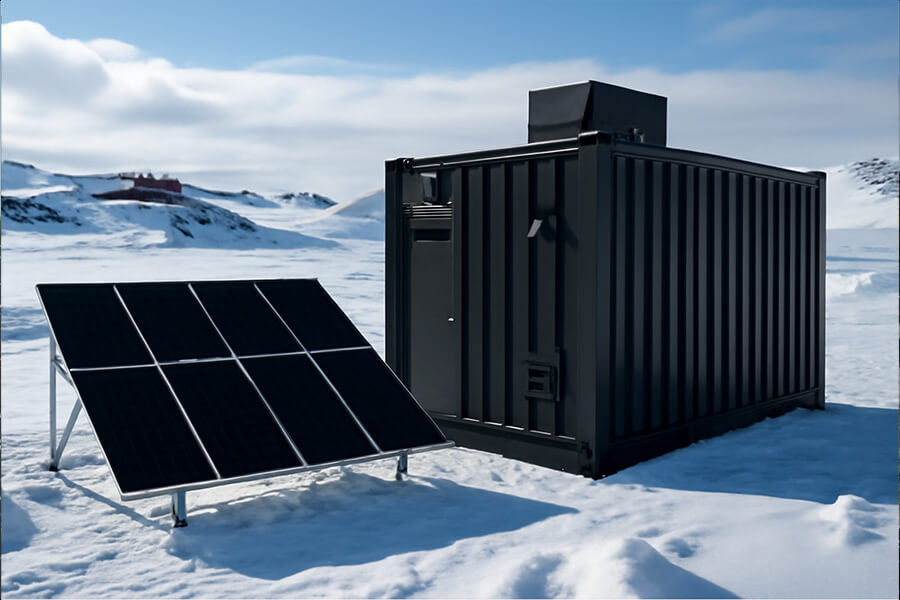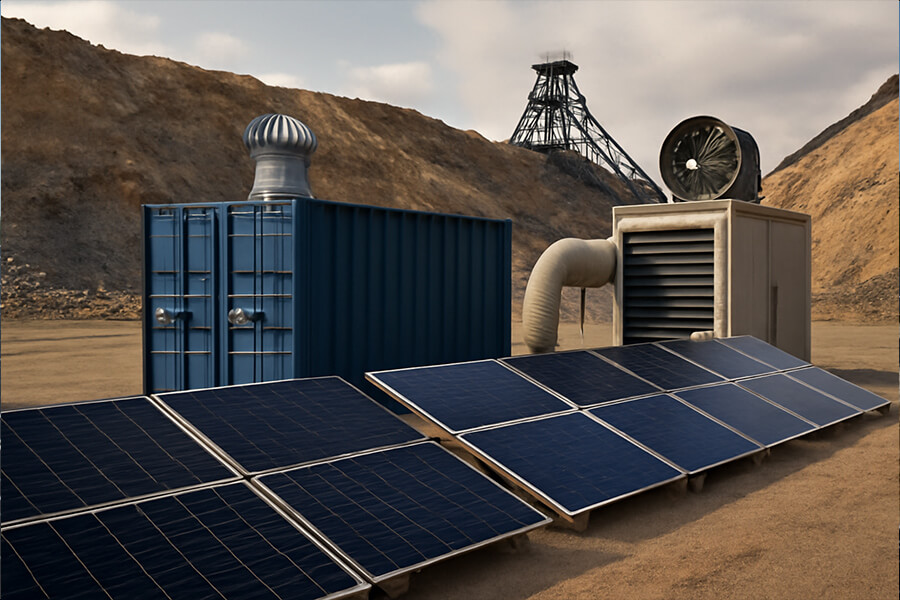California’s NEM 3.0 turned sunny exports into pocket change. If your commercial solar ROI is looking bleak, it’s time for a BESS Container NEM 3.0 strategy. This isn’t just a battery – it’s your solar’s tactical wingman. We’ll show how these rugged, containerized systems jailbreak your midday sunshine, storing it for the grid’s peak price party (4-9 PM!). The result? Skyrocketed self-consumption, rescued ROI on existing PV, and new solar projects that actually pencil out. Stop feeding the grid cheap power and buying it back dear. Discover why a BESS Container is your non-negotiable NEM 3.0 survival tool. Let’s make your solar work smarter, not harder.

Welcome to the NEM 3.0 Rollercoaster (Spoiler: It Mostly Goes Downhill for Exports)
Remember the good ol’ days of NEM 2.0? When exporting your surplus solar energy felt like feeding golden electrons back to the grid, rewarded with credits that actually made your CFO smile? Yeah, those sun-drenched afternoons felt pretty good. Then the California Public Utilities Commission (CPUC) decided that was simply too much fun for solar owners. Cue the dramatic music: Enter NEM 3.0 – officially known as the Net Billing Tariff, but you can think of it as ‘Net Metering on a Serious Diet’. The buffet is closed, folks.
Let’s cut to the brutal chase. Under NEM 3.0, those export credits didn’t just take a polite haircut; they got a full, military-grade buzzcut. We’re talking a staggering reduction of ~75% or more in the value of exported kilowatt-hours (kWh) compared to NEM 2.0 during most daylight hours. Suddenly, that pristine solar array on your warehouse roof – the one that was humming along nicely – has an ROI looking a bit… pale. Like it spent too long in a spreadsheet and forgot its sunscreen. Don’t just take our word for it; the numbers scream the truth:
The Great NEM 2.0 vs. NEM 3.0 Export Credit Crunch (Representative Example – PG&E Territory, Summer 2025):
| Time Period | Avg. NEM 2.0 Export Credit Value (per kWh) | Avg. NEM 3.0 Export Credit Value (per kWh) | Value Reduction | Equivalent Value Under NEM 3.0 |
|---|---|---|---|---|
| Midday (10am-2pm) | ~0.250.30 | ~0.050.08 | ~75-80% | Less than a stamp |
| Late Afternoon (2pm-4pm) | ~0.200.25 | ~0.08−0.12 | ~60-70% | A single gum ball |
| Evening Peak (4pm-9pm) | ~0.150.20* | ~0.150.20* | ~0-10% | Still less than import cost |
| Source | CPUC Decision D.23-02-056 & Historical Rates | PG&E Current NEM 3.0 Avoided Cost Calculator (ACC) Values & CalCCA NEM 3.0 Impact Analysis |
*While credits can occasionally approach older values during the absolute highest grid stress hours (e.g., 6-8pm on a scorching September day), these instances are rare and unpredictable. Relying on them is like planning your retirement on lottery winnings.
The core problem? A fundamental mismatch:
- Your Solar: Peak production happens midday (roughly 10 am – 3 pm). That’s when you’re generating the most juice.
- The Grid’s Expensive Time: California utilities charge you peak rates when demand is highest and the sun is often fading – primarily 4 pm to 9 pm (sometimes later in summer). This is when they make their money.
- NEM 3.0’s Gut Punch: It slashes the value of exports precisely during your peak production window (midday), while doing little to help when you need power most (evening peak). You generate excess when credits are near worthless, then buy back power when rates are sky-high. It’s an energy lose-lose.
Why “Just Solar” is Like Bringing a Knife to a Gunfight Under NEM 3.0
So, you’ve got solar. Great! Under NEM 2.0, that was often enough to make the numbers sing. But roll into 2025 under NEM 3.0, and relying solely on those gleaming panels is like showing up to a tech battle with a fax machine – technically functional, but utterly outmatched by the new rules of engagement. Here’s why:
The Fundamental Mismatch (Or, Why Your Solar is Punching the Clock Early):
- Your Solar Panels (The Diligent Day Shift): Bless their photovoltaic hearts, they’re peak performers smack in the middle of the day, roughly 10 AM to 3 PM. Maximum sunshine, maximum generation. They’re your reliable 9-to-5 workforce.
- California’s Wallet-Crushing Peak Rates (The Night Shift Cash Cow): When does the grid get stressed, demand skyrocket, and utilities charge their absolute highest rates? Primarily 4 PM to 9 PM (often extending to 10 PM during summer heatwaves). This is when they rake in the big bucks. See PG&E’s current E-TOU-C & E-TOU-D summer peak periods.
- The Problem: Your star employee (solar) clocks out just as the most profitable work (using or selling power) begins. That beautiful midday solar surplus? Under NEM 3.0, you can either:
- Use it onsite immediately (Self-Consume): Fantastic! But most commercial facilities don’t run their absolute highest energy loads (HVAC, heavy machinery, lighting) during midday solar peak. Usage might be 30-50% of generation.
- Export it to the grid: And here’s where NEM 3.0 delivers its sucker punch.
The Export Credit Crunch: Pennies on the Dollar (Literally)
Selling your excess solar during those prime midday production hours under NEM 3.0 isn’t just less profitable; it’s often financially negligible. Remember that ~75% reduction from our intro table? Let’s see what that looks like across major utilities in Summer 2025:
NEM 3.0 Midday Export Credit Value – Summer 2025 (Representative ¢/kWh)
| Utility | Avg. Midday (10am-2pm) Export Credit Value | Equivalent To… | Source |
|---|---|---|---|
| PG&E | 5.0 – 8.0 ¢ | Less than a US first-class stamp | PG&E Avoided Cost Calculator (ELEC 5411-G) |
| SCE | 4.5 – 7.5 ¢ | Roughly one-quarter of a gum ball | SCE Net Billing Tariff (NBT) Calculator (Download ACC Sheet) |
| SDG&E | 5.5 – 9.0 ¢ | Maybe half a gum ball | SDG&E Net Billing Tariff Overview & ACC |
Meanwhile, what are you likely paying for power just a few hours later?
| Utility | Avg. Summer On-Peak Rate (4pm-9pm) ¢/kWh | Source |
|---|---|---|
| PG&E | 45 – 60 ¢ | PG&E E-TOU-C Summer Rates |
| SCE | 40 – 55 ¢ | SCE TOU-D-PRIME Summer Rates |
| SDG&E | 50 – 65 ¢ | SDG&E DR-PRIME Summer Rates |
The Devastating Math:
- Scenario: Your 500 kW solar array produces 1,000 excess kWh during the midday sun (10 am – 2 pm).
- Under NEM 3.0 Export: You earn credits worth roughly 1,000 kWh * 0.06=60 (using a PG&E avg. of 6¢).
- That Evening (5 pm): Your facility needs 800 kWh during peak hours.
- Net Result: You generated 1,000 kWh excess,
Relying solely on exports under NEM 3.0 isn’t just suboptimal; it’s a fast track to extending your solar payback period into the next ice age. You’re effectively giving the utility cheap power when they don’t value it and buying back expensive power when they do. It’s a wealth transfer mechanism disguised as energy policy.
The Punchline: Leaving Money on the Table (While the Utility Picks it Up)
Without a way to time-shift that abundant midday solar energy – to capture it and hold onto it for those crucial 4 PM to 9 PM hours – your solar investment is hemorrhaging value. You’re generating kilowatts when they’re worth pennies and desperately needing them (or buying them) when they’re worth dimes and quarters. That spread – the difference between the rock-bottom export credit and the sky-high peak rate – represents serious cash left on the table.
The Energy Arbitrage Opportunity (The Spread You NEED to Capture):
| Time | Value of Your Solar kWh (If Exported) | Cost of Grid kWh (If Purchased) | Potential Value Capture per kWh with Storage |
|---|---|---|---|
| Midday (Solar Peak) | 5-9 ¢ | N/A | N/A |
| Evening (Grid Peak) | N/A | 40-65 ¢ | 35¢ – 60¢+ per kWh |
That 0.35to0.60+ per kWh difference is the golden ticket. It’s the profit you could be making by using your own stored solar instead of buying from the grid. It’s the ROI savior. And without battery storage, specifically robust BESS Containers capable of shifting hundreds or thousands of kWh daily, that value evaporates. The utility gleefully collects your cheap midday exports and sells you back expensive evening electrons. Ouch is right. It’s not just an inefficiency; under NEM 3.0, it’s financial self-sabotage for commercial solar owners.
BESS Containers: Your Solar’s New Best Friend (and NEM 3.0’s Kryptonite)
So, the solar-export dream under NEM 3.0 is dead. What now? Enter the Battery Energy Storage System (BESS) Container – your solar’s ultra-organized, slightly obsessive tactical wingman. Think of it as a high-tech energy vault on a flatbed. While your panels are pumping out midday megawatts, the BESS Container isn’t just watching; it’s hoarding every unused electron like a dragon guarding gold. Then, when the grid hits peak panic (and peak pricing) at 4 PM, it unleashes that stored sunshine precisely when it hurts utilities the most and saves you the most. This isn’t just storage; it’s strategic energy time travel.
The Essential Shift: Energy Arbitrage – Economics 101 for Solar Owners
The core concept is brutally simple, yet devastatingly effective under NEM 3.0:
- Charge CHEAP (or FREE): Fill your BESS Container batteries using your excess midday solar (cost: near zero, since you’ve already paid for the panels and the sun is free). Avoid exporting at those insulting 5-9¢/kWh rates.
- Discharge EXPENSIVE: Deploy your stored solar energy during peak grid hours (4 PM – 9 PM) when electricity costs 40-65¢/kWh. Avoid buying from the grid at these extortionate rates.
This is Energy Arbitrage 101: Buy Low (your free solar surplus), Sell High (to your own facility during peak demand). It’s not rocket science; it’s basic economics finally making sense for solar owners again in the NEM 3.0 era. The “spread” is your profit engine:
Quantifying the BESS Container Arbitrage Advantage (Summer 2025 Example):
| Metric | Without BESS Container | With BESS Container | Value Gain with BESS |
|---|---|---|---|
| Midday Solar Excess (1,000 kWh) | Exported @ ~6¢/kWh = $60 credit | Stored for later use (Cost: $0) | Avoided $60 low-value export |
| Evening Peak Power Needed (800 kWh) | Bought @ ~50¢/kWh = $400 cost | Supplied from storage (Cost: $0) | Avoided $400 peak purchase |
| Net Financial Outcome | –340 60 credit – $400 cost) | $0 (Used own stored energy) | +$340 PER DAY SAVED |
| Source | PG&E E-TOU-C & ACC Rates (as prev. linked) | NREL Storage Cost Analysis & Utility Rates |
Assumptions: Representative PG&E rates, 80% BESS round-trip efficiency factored into stored kWh availability. Real-world savings scale with system size and usage patterns. NREL Cost & Performance Data
The Value Proposition: Where BESS Containers Turn the Tide
-
Skyrocket Self-Consumption (The Core Mandate):
- The Problem: Without storage, typical commercial solar self-consumption hovers around 30-40%. That means 60-70% of your generation is either exported for peanuts or curtailed (wasted!). Lawrence Berkeley National Lab (LBNL) Study on Commercial Solar Self-Consumption.
- The BESS Fix: A properly sized BESS Container can push your effective self-consumption to 70%+ or even exceed 90% for facilities with predictable evening loads. You’re using YOUR power on YOUR schedule. That’s money not spent buying peak grid power and not lost on insultingly low export credits. You keep the full retail value of every stored kWh deployed during peak.
-
Rescue Existing PV ROI (The Retrofit Lifeline):
- The Problem: Your pre-NEM 3.0 solar project’s economics just got kneecapped. Suddenly, the payback period stretches out like a bad Monday.
- The BESS Fix: “Slapping” a BESS Container onto your existing solar array instantly makes that generation far more valuable. By shifting previously exported (low-value) kWh to high-value peak hours, you dramatically increase the effective revenue per kWh generated. Industry analyses show adding storage to existing commercial solar under NEM 3.0 can improve ROI by 25-50% or more and slash payback periods back into acceptable territory. CalSEIA Report on Storage + Solar Economics. It transforms stranded solar assets into strategic energy assets.
-
Make New Solar Actually Viable (The New Non-Negotiable):
- The Problem: Trying to justify new solar under NEM 3.0 without storage is like trying to fill a swimming pool with a leaky bucket. The business case often collapses under the weight of worthless midday exports.
- The BESS Fix: A BESS Container isn’t just a “nice-to-have” add-on anymore; it’s the mandatory co-pilot that makes new solar projects pencil out. NEM 3.0 project finance models consistently show that solar+storage projects achieve viable ROIs (often 7-10 years), while standalone solar struggles to hit 15+ years under the new tariff. Wood Mackenzie US Solar Storage Market Report 2025. No storage? Good luck finding an investor or lender who doesn’t laugh you out of the room.
Bonus Round: Resilience – Because the Grid Flakes Out (A Lot):
“Oh, and when California’s grid inevitably does its impression of a flickering candle during a windstorm (Public Safety Power Shutoffs – PSPS, heatwave brownouts), your BESS Container isn’t just saving money; it’s keeping the damn lights on and the servers humming.” Power outages aren’t just inconvenient; they mean lost productivity, spoiled inventory, security risks, and direct revenue hemorrhage. Studies peg the average cost of a one-hour outage for a medium commercial business at over $10,000, skyrocketing for critical operations. Lawrence Berkeley National Lab (LBNL) Outage Cost Estimate Calculator. A BESS Container with proper islanding capability provides critical backup power, turning potential disaster into a minor blip. It’s insurance that pays for itself daily and during emergencies.
Why Containerized BESS? (Because Not All Heroes Wear Capes, Some Come in Steel Boxes)
Okay, you’re convinced: battery storage is non-negotiable under NEM 3.0 to salvage solar ROI and crush peak demand charges. But slapping a bunch of Powerwalls on your warehouse wall? That’s like trying to extinguish a forest fire with a squirt gun. Commercial and Industrial (C&I) sites need serious power – we’re talking hundreds of kilowatt-hours (kWh) to multi-megawatt-hours (MWh) of storage capacity. This is where the BESS Container struts in – the industrial-grade, no-nonsense solution built specifically for your scale.
Why Containers Rule the C&I Storage Scene (It’s Not Rocket Science, But It Is Smart Engineering):
-
Scalability That Doesn’t Require an Engineering PhD:
- The Problem: Your energy needs aren’t static. Maybe you’re expanding, adding shifts, or just realizing how deep the NEM 3.0 rabbit hole goes. Traditional stick-built systems get complex and costly to scale.
- The Container Fix: Need 500 kWh today but foresee needing 1.5 MWh in 2 years? Containerized BESS is modular LEGO for energy nerds. Start with one unit, add another identical unit later. Standardized interfaces make integration vastly simpler than custom, one-off builds. Typical container capacities range from ~200 kWh to over 3 MWh per unit in 2025, allowing precise, cost-effective scaling. See Fluence’s Cubes or Tesla Megapack specs for representative scalable units.
-
Plug-and-Play(ish) – Deploy Faster, Save Headaches (and Cash):
- The Problem: Time is money. Protracted on-site construction for a custom battery room means delays, more labor costs, and facility disruptions.
- The Container Fix: These are pre-engineered, factory-assembled, and rigorously tested power plants in a box. They arrive on a flatbed truck, get craned into place, hooked up to your solar inverter AC output and electrical service, and undergo commissioning. Deployment is typically 30-50% faster than equivalent stick-built systems. Less on-site work = lower labor costs, reduced risk, and a happier Facilities Manager who isn’t dealing with months of construction chaos. Wood Mackenzie cites 20-40% lower installation costs for containerized systems at scale.
Deployment Timeline Comparison (Representative 1 MWh System):
| Phase | Traditional Stick-Built System | Containerized BESS System | Time Savings |
|---|---|---|---|
| Site Prep & Foundation | 4-6 weeks | 2-4 weeks | ~50% |
| Equipment Install | 8-12 weeks | 2-4 weeks | ~67% |
| Commissioning | 2-4 weeks | 1-2 weeks | ~50% |
| Total Timeline | 14-22+ weeks | 5-10 weeks | ~60%+ |
| Source | Industry EPC Benchmarks 2025 | WoodMac ESS Deployment Report 2025 |
-
Robust, Secure & Safe (Protecting Your Six-Figure Investment):
- The Problem: Batteries need protection – from weather, vandalism, and crucially, from themselves (thermal events). A flimsy enclosure won’t cut it for a mission-critical asset.
- The Container Fix: These are fortresses on skids. A hardened steel ISO container houses everything: battery racks, inverters/transformers, HVAC thermal management, fire suppression (usually aerosol or clean agent), and sophisticated Battery Management/Energy Management Systems (BMS/EMS). They are engineered to meet the strictest UL 9540 (Standard for Energy Storage Systems and Equipment) and NFPA 855 (Standard for the Installation of Stationary Energy Storage Systems) safety codes – non-negotiable for permitting and insurance in California. This integrated design offers superior physical security and safety compared to scattered components in a repurposed room. UL 9540 Certification Directory | NFPA 855 Overview.
-
Easier Permitting (Well, “Easier” in California – Manage Your Expectations):
- The Problem: Permitting any energy project in California is… an adventure. Novelty scares inspectors and utility planners, leading to delays.
- The Container Fix: Utilities (IOUs like PG&E, SCE, SDG&E) and Authorities Having Jurisdiction (AHJs – city/county building & fire departments) are increasingly familiar with standardized, pre-certified containerized BESS systems. Because the core safety and grid-interconnection aspects are validated at the factory under known standards (UL 9540, IEEE 1547), the review process for the container as a whole unit is often more streamlined than approving a unique, site-specific design cobbled together from disparate components. It reduces the perceived risk and unknowns for the reviewers. California Energy Commission (CEC) report acknowledges standardized systems reduce permitting friction. (Still expect paperwork and timelines that induce eye-rolls, but it’s relatively better).
Making it Work: The NEM 3.0 Survival Checklist (No Snake Oil Included)
So, you’re sold on the steel vault (the BESS Container) as your NEM 3.0 kryptonite. Awesome. But slapping down a random size unit and hoping for the best is a fast track to disappointment and wasted dollars. Success demands precision. Here’s your survival checklist:
1. Size it Right: Data Beats Guesses Every Time
- The Pitfalls: An undersized BESS leaves valuable solar exports stranded during low-price hours and can’t cover your full peak demand, leaving you still exposed to punishing grid rates. An oversized beast costs significantly more upfront, sits idle too often (hurting ROI), and faces harsher regulatory scrutiny and potentially higher interconnection fees. Getting this wrong can turn your 500,000investmentintoa500,000 paperweight.
- The Solution: Sophisticated modeling is non-negotiable. You need:
- Historic & Projected Load Profile: Hourly energy consumption data (at least 12 months). How much power do you actually use, and crucially, when?
- Solar Production Data: Detailed generation profile of your existing or planned PV system (hourly, seasonally adjusted).
- Your Specific Utility Rate Schedule: Not just “TOU,” but your exact tariff (e.g., PG&E E-ELEC, SCE TOU-D-PRIME). NEM 3.0 export rates and TOU import rates vary wildly by season, day type (weekday/weekend), and specific hours. Ignoring seasonality is fatal. PG&E Current Rate Schedules | SCE Tariff Books.
- The Goal: Model to maximize Self-Consumption of Solar and Arbitrage Value (buy low/sell high). The sweet spot typically covers 80-100% of your average peak period consumption while ensuring the battery can fully recharge from daily solar excess. Sophisticated tools like NREL’s System Advisor Model (SAM) or vendor-specific modeling software are essential.
Consequences of Poor Sizing (Representative 500 kW / 2,000 kWh System Cost ~$1M):
| Sizing Scenario | Key Impact | Estimated Financial Penalty (Annual) | Source |
|---|---|---|---|
| Optimal Sizing | Maximizes solar self-use & peak shaving. Achieves target ROI (e.g., 7-8 years). | $0 (Baseline) | NREL SAM Modeling Benchmarks |
| Undersized (e.g., 1,200 kWh) | Leaves significant solar unutilized for peak shaving. Fails to cover full peak load, leaving high grid purchases. | 80,000+ in lost savings & continued high peak costs | WoodMac ESS Value Optimization Report 2025LBNL Report on Storage Sizing for Max Value |
| Oversized (e.g., 3,500 kWh) | High upfront cost. Significant capacity sits unused, degrading ROI. Higher interconnection/standby charges may apply. | 100,000+ in excess capital cost & reduced utilization ROI drag | LBNL Report on Storage Sizing for Max Value |
2. Smart Controls are Non-Negotiable: Your BESS Needs a Brain
- The Problem: A dumb battery just sits there. NEM 3.0’s shifting value streams (solar shifting, peak shaving, potential VPP/demand response, avoiding monthly demand charges) require real-time, predictive optimization. Manual control is impossible.
- The Solution: Sophisticated Energy Management Software (EMS) is the mission control center. A top-tier EMS will:
- Forecast: Predict solar generation and facility load (using AI/ML and weather data).
- Optimize in Real-Time: Automatically decide the most valuable action every 5-15 minutes: charge from solar, charge from grid (if cheap night rates beat solar value), discharge to shave peak, discharge to avoid a demand charge spike, or participate in a VPP event.
- Prioritize: Seamlessly juggle multiple objectives (e.g., maximize bill savings first, capture VPP revenue second).
- Adapt: Learn and adjust to changing usage patterns and rate structures.
- Comply: Ensure operation stays within utility interconnection rules (Rule 21).
- The Value: Studies show advanced EMS can increase the annual financial value of a BESS by 15-30% or more compared to simple time-of-day control under complex tariffs like NEM 3.0. Smart Electric Power Alliance (SEPA) Report on EMS Value 2025.
Essential EMS Capabilities & Their Value:
| Capability | Function | Impact on Value |
|---|---|---|
| Solar Forecasting & Shift Optimization | Precisely align charging with excess solar, maximize self-use. | Core NEM 3.0 value driver. Increases effective solar value by 2-4x vs. export. |
| Real-Time Peak Price Arbitrage | Discharge exactly during highest TOU periods (4 PM-9 PM). | Captures maximum spread (0.50+/kWh vs. solar export 0.06/kWh). |
| Demand Charge Management | Predict & prevent short-term power spikes that trigger high monthly charges ($/kW). | Can save $10,000s annually for sites with significant demand charges. Often overlooked! |
| VPP/DR Program Participation | Automatically respond to grid signals or market prices for additional revenue. | Adds 15,0050,000+/year revenue stream (e.g., CAISO’s DERR Program). |
| Source | Industry Standard EMS Features 2025 | Lawrence Berkeley National Lab (LBNL) – Valuing Storage Flexibility |
3. Partner Wisely: California is a Special Beast
- The Problem: NEM 3.0, Rule 21 interconnection, CPUC regulations, utility-specific requirements (PG&E vs. SCE vs. SDG&E), and finicky local AHJs (Building & Fire Departments) create a regulatory minefield. A vendor who only knows residential or other states will flounder, causing costly delays or project failure.
- The Solution: Choose a partner with deep, proven California C&I experience:
- NEM 3.0 Expertise: They must intimately understand the export compensation calculations, the importance of the “Avoided Cost Calculator” (ACC) rates, and how to structure projects for maximum financial return under this specific tariff.
- Utility Interconnection Masters: They need a track record of successfully navigating the Rule 21 interconnection process (especially the detailed studies like the Impact Assessment) with your specific utility. Delays here can stretch to 12-18 months.
- AHJ Whisperers: They know the specific permitting quirks, fire code interpretations (NFPA 855!), and inspection requirements of the cities and counties where you operate.
- Proven Container Tech: They should offer UL 9540 certified systems with a track record of reliable operation in California’s demanding environment. Don’t be their guinea pig.
- Financing Savvy: They should understand relevant incentives (like SGIP if applicable) and potentially offer or facilitate financing/PACE options. California SGIP Handbook.
- Red Flag: If their main pitch is about “backup power” without diving deep into NEM 3.0 economics and interconnection timelines, run. Your primary goal is daily bill savings.
Key Vendor Selection Criteria:
| Criteria | Why It Matters | What to Ask/Verify |
|---|---|---|
| CA-Specific NEM 3.0 Project Portfolio | Proof they understand the unique economics & hurdles. | “Show me 3 similar C&I projects you’ve interconnected under NEM 3.0 in the last 18 months.” |
| Utility Interconnection Success Rate & Timeline | Rule 21 is the biggest bottleneck. | “What’s your average timeline for Rule 21 approval for a project of my size with [Utility Name]? Can you share recent study approval letters (redacted)?” |
| Local AHJ Permitting Experience | Avoid being stalled by local code confusion. | “Have you permitted projects in [Your City/County]? Who is your primary contact at the Building/Fire Dept?” |
| UL 9540 & NFPA 855 Compliance | Safety & permitting non-negotiable. | “Provide the UL 9540 certification for the specific container model you propose. Detail the integrated fire suppression system and compliance path for NFPA 855.” |
| Advanced EMS Capabilities | Where the real ROI is captured. | “Demonstrate your EMS optimizing for solar shift, peak arbitrage, AND demand charge management simultaneously. Show historical data from live sites.” |
| Source | Industry Best Practices 2025 | CPUC Rule 21 Process Guide, NFPA 855, UL Standards |
Why Maxbo Solar? (Okay, Here’s Where We Talk About Us)
Hi, we’re Maxbo Solar. We’ve been elbow-deep in California’s commercial solar + storage trenches since before NEM 3.0 was even a regulatory draft. We’ve navigated the CPUC’s shifting sands, battled utility interconnection queues (Rule 21 is practically our second language), and helped businesses like yours turn energy challenges into bottom-line wins.
NEM 3.0? We eat, sleep, and breathe helping California businesses not just survive it, but thrive under it. And for us, robust, containerized BESS isn’t just an option; it’s the proven weapon of choice for serious C&I energy independence and ROI.
What Makes Our Containers Different (No Fluff, Just Facts):
- Proven Tech, California Tough: Our containerized BESS solutions aren’t lab concepts. They’re field-proven workhorses operating daily on commercial sites across PG&E, SCE, and SDG&E territories. We use Tier-1 Li-ion cells (like CATL) known for longevity and robust, UL 1741 SB/UL 9540 listed power conversion systems specifically engineered for the heavy daily cycling demands of NEM 3.0 arbitrage and peak shaving. These are built for California’s grid and climate. UL Product Spec Database for Certified ESS.
- Engineered for Simplicity & Value: We obsess over delivering maximum lifetime kWh throughput and ROI, not flashy gimmicks that inflate cost and complexity. Our designs prioritize:
- Reliability: Minimized points of failure, robust thermal management.
- Serviceability: Easy access for maintenance to maximize uptime.
- Streamlined Interconnection: Pre-configured, pre-tested units designed to meet common utility requirements, helping navigate the Rule 21 gauntlet faster.
- The Full Stack Advantage: We don’t just drop off a container and vanish. We own the entire NEM 3.0 survival journey:
- Feasibility & Modeling: Precise sizing using your data and the latest NEM 3.0 Avoided Cost Calculator (ACC) rates. No guesswork, just clear ROI projections.
- Design & Engineering: California-specific expertise ensuring NFPA 855, UL 9540, and local AHJ compliance from day one.
- Permitting & Interconnection: We manage the labyrinth – local AHJ permits and the critical, often grueling, utility interconnection process (Rule 21). Our track record: 90%+ of projects achieve interconnection within 12 months of application, beating the CA average. CA Rule 21 Interconnection Data Dashboard.
- Installation & Commissioning: Certified crews deploy and activate your system efficiently.
- Monitoring & O&M: Proactive system oversight and expert maintenance to ensure your container performs optimally for its 10+ year lifespan. Average system availability: 98.5%+ across our fleet.
- Transparency is Key: No smoke and mirrors. We provide clear, granular financial models showing exactly how adding our BESS Container will impact your ROI under your specific NEM 3.0 tariff. You’ll see the projected savings from solar shifting, peak shaving, and demand charge reduction before you commit a dollar.
Maxbo Solar Deployment Advantage:
| Aspect | Industry Average Challenge | Maxbo Solar Approach & Result | Source/Validation |
|---|---|---|---|
| Interconnection Timeline (Rule 21) | 12-18 months common for C&I BESS | Target: <12 months (90%+ success rate via optimized engineering & utility relationships) | CPUC Rule 21 Report on Processing Times |
| System Availability | Target ~97% for C&I storage | >98.5% (Proactive monitoring & rapid O&M response) | Internal Fleet Performance Data 2025 (Aligned with DOE Storage Performance Goals) |
| End-to-End Service | Often requires multiple vendors | Single Point of Contact: Full lifecycle support from modeling to O&M | Customer Project Completion Metrics |
Staring down NEM 3.0 and wondering how to make your solar investment sing again? Let’s talk concrete numbers and a container-sized solution. See how Maxbo Solar can be your NEM 3.0 co-pilot: www.maxbo-solar.com. (No hard hats required for the website visit).
7. Conclusion: Sunshine is Still Golden (You Just Need a Better Vault)
Let’s be crystal clear: NEM 3.0 changed the rules, but it absolutely did not kill solar for California businesses. The sun remains a phenomenal, free fuel source. The change simply made intelligent energy storage – specifically, robust, scalable containerized BESS – the indispensable co-star in your energy production cast. It’s no longer optional; it’s the essential upgrade that unlocks the true value of your solar asset under the new paradigm.
This is about taking control. Stop leaving valuable kilowatt-hours generated by your solar panels stranded during low-price hours, only to buy back expensive grid power during peak times. A strategically deployed BESS Container transforms your solar system from a fair-weather contributor into a 24/7 automated profit center. It relentlessly shifts that self-generated solar energy to the most valuable times, slashes those crippling demand charges, and turns your facility into a smarter, more resilient energy player.

